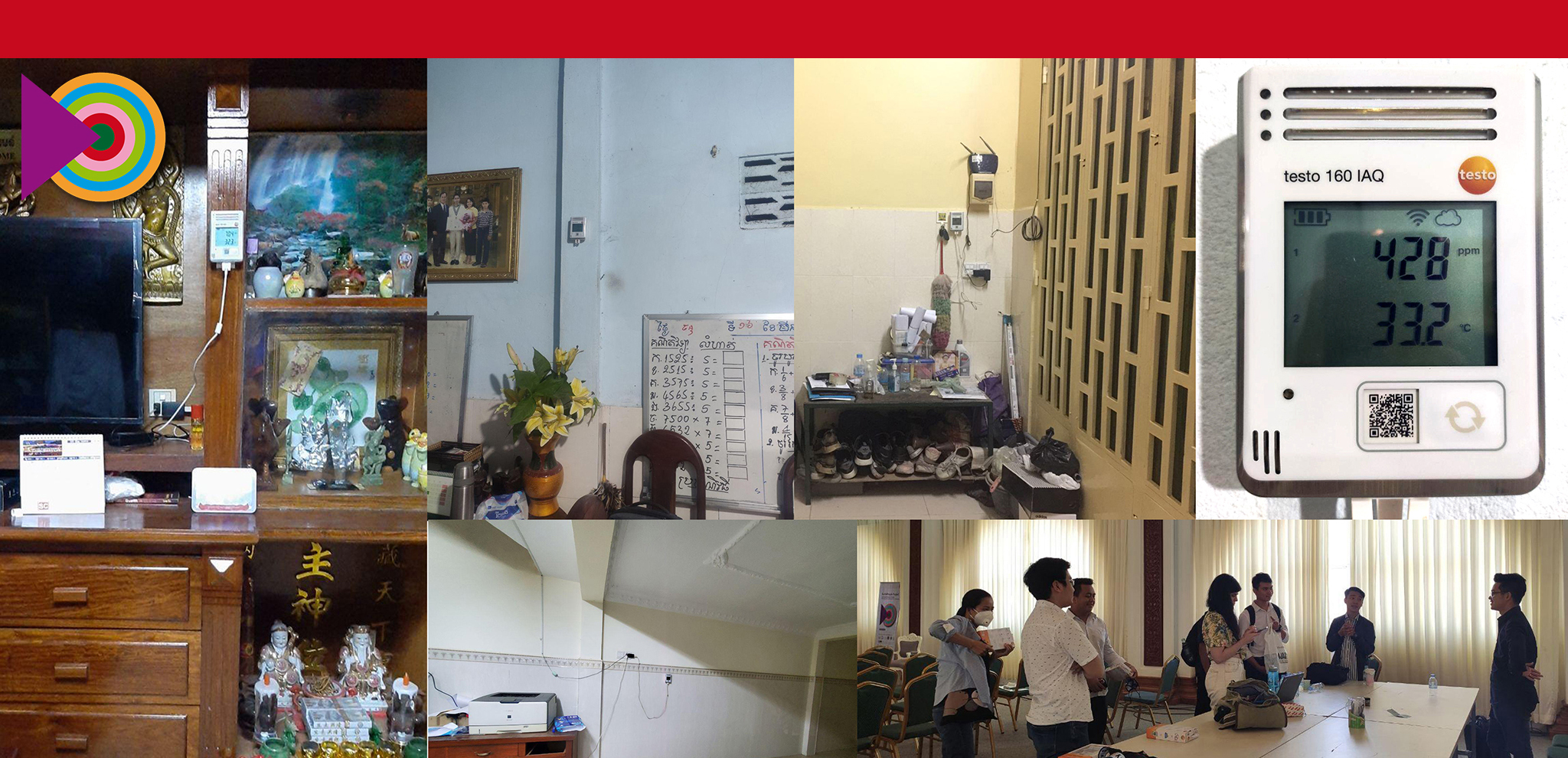In collaboration and with the support of the School of Architecture and Urban Planning at Paññāsāstra University of Cambodia the measurement campaign was launched in March 2020, the monitoring equipment was installed and put into operation in 8 residential buildings in the metropolitan area of Phnom Penh.

During our stay there was a short introduction of the equipment from our team, followed by online meetings to make sure the installation and operation was following the standards set for our research. Physical measurements are conducted in the main living room at a height of approximately 1.1 m above the floor level, in accordance with ISO: 16000-1. The parameters measured are temperature, relative humidity (RH) and carbon dioxide using Testos’ 160 IAQ data logger (RH resolution 0.1%, accuracy ±2–3%, temperature resolution 0.1 °C, accuracy ±0.5 °C, CO2 resolution 1 ppm, accuracy ±3% or ±50 ppm). Outside conditions will be obtained from a local weather monitoring site. The data is transmitted via Wi-Fi to an online database, where our team can have real time and history data, download and check for problems that need to be fixed.


In order to examine the indoor environmental quality (IEQ) of the measured buildings, preliminary data should be collected regarding the architectural, mechanical and operational characteristics of each house or apartment, together with the energy consumption bills during the last year. These data are being gathered with the help of a questionnaire, specifically designed for the purposes of the Build4People project. The questionnaire was originally planned to be filled at the same time of the installation of the measuring equipment, by a member of our team, but due to the covid-19 restrictions everything was organised online. Online meetings were conducted to support the filling of the questionnaire and to answer questions related to the campaign overall.

As part of WP#2’s work plan, the results from this measurement campaign can be used as a preliminary evidence-based support of the development of a regulatory framework for sustainable and energy efficient buildings. During the envisaged four-year Build4People Research Development phase, significantly more measurement devices will get installed to achieve more representative data which shall also support more sustainable building and construction practices, in general.
Since they rely on actual measurements of air temperature, RH and CO2 concentrations in residential buildings they can be simple and understandable and therefore able to sufficiently inform equally scientist, occupants of the buildings and other relevant actors about the indoor environmental and air quality conditions.

